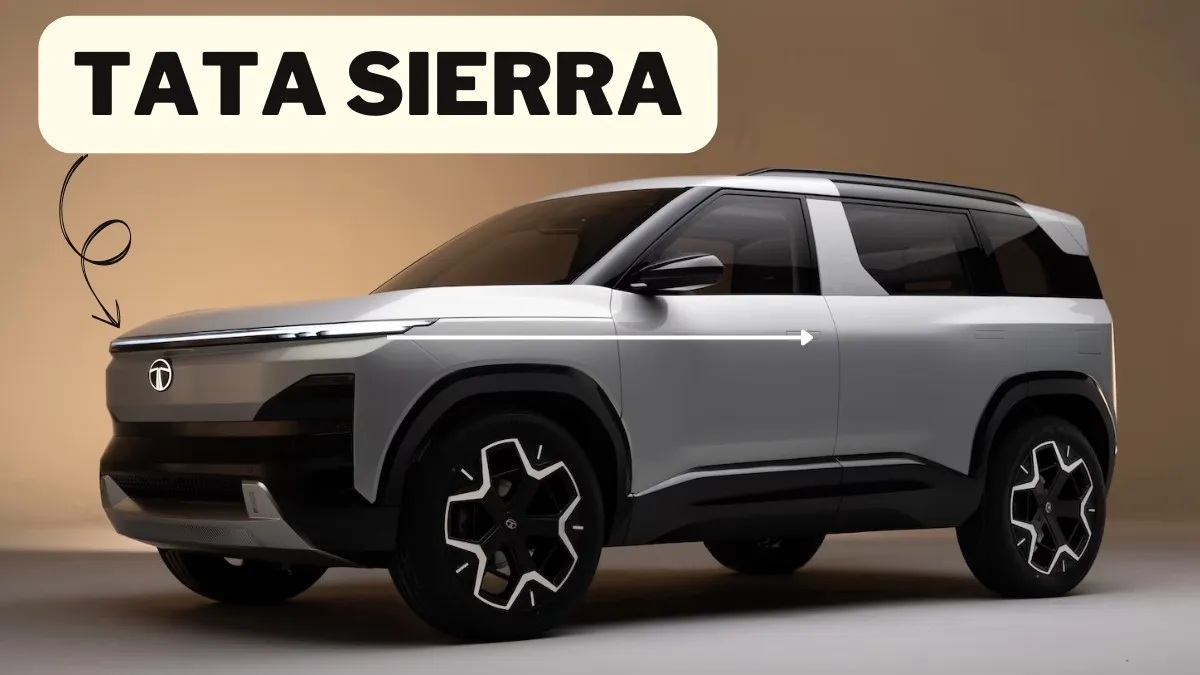The Tata Sierra is making a grand return, capturing the hearts of SUV enthusiasts and nostalgic fans alike. Originally launched in the 1990s, the Sierra was one of India’s first lifestyle SUVs, combining rugged performance with a distinctive design. Now, Tata Motors has brought back this iconic vehicle in a completely new avatar that aligns with modern automotive standards, offering cutting-edge technology, eco-conscious engineering, and premium aesthetics.
The new Tata Sierra concept was first unveiled at the Auto Expo 2020 and then refined further at the 2023 edition, where it garnered massive attention. Unlike its predecessor, which was built on a traditional ladder-frame chassis, the new Sierra is designed on Tata’s advanced Sigma EV platform—an electric-only architecture derived from the ALFA platform. This shift highlights Tata’s commitment to sustainable mobility, as the new Sierra is expected to be offered with an all-electric drivetrain, catering to the growing demand for clean energy vehicles.
Design-wise, the new Tata Sierra is a futuristic reinterpretation of the original. The concept retains the signature wraparound rear glass panel, a hallmark of the classic Sierra, but infuses it with bold, muscular lines and modern LED lighting. The front fascia features sleek headlamps, a minimalistic grille, and a high ground clearance, giving it an aggressive yet refined stance. The dual-tone paint finish and panoramic sunroof enhance the premium appeal, targeting urban customers who want both style and substance in their SUV.
Step inside, and the Tata Sierra continues to impress. The interior is designed to provide a lounge-like experience, with high-quality materials, soft-touch panels, and smart features throughout. The dashboard is clean and minimalistic, dominated by a large touchscreen infotainment system with wireless Android Auto and Apple CarPlay, paired with a digital instrument cluster. Tata is also expected to integrate its next-gen ADAS (Advanced Driver Assistance Systems) in the production model, improving safety and convenience for long drives and city commutes alike.
When it comes to performance, Tata has hinted at offering both electric and ICE (internal combustion engine) variants of the Sierra, though the electric version is expected to be the primary focus. The EV model will likely come equipped with a high-capacity lithium-ion battery, offering a driving range of over 500 kilometers on a single charge, making it a viable option for inter-city travel. Fast-charging capabilities and regenerative braking will add to its practicality.
The Sierra’s comeback also aligns with Tata Motors’ broader vision to transform its product portfolio to meet global standards. With rivals like the Mahindra XUV.e8 and Hyundai Creta EV in the pipeline, Tata aims to position the Sierra as a premium electric SUV that balances nostalgic value with modern-day expectations.
Another key advantage is sustainability. The vehicle is expected to use recyclable materials and sustainable manufacturing practices. The upholstery may include vegan leather or eco-friendly fabrics, further reducing the carbon footprint of the vehicle.
Tata Motors is likely to launch the new Sierra by late 2025 or early 2026, with pricing expected to start from ₹25 lakh (ex-showroom) for the base EV variant. Positioned above the Tata Harrier and Safari, the Sierra will cater to premium SUV buyers looking for something unique, futuristic, and environmentally responsible.
In conclusion, the Tata Sierra’s return marks a bold new chapter in India’s automotive story. It is not just a comeback; it’s a transformation—taking the spirit of the original Sierra and reshaping it into a product that meets the demands of tomorrow. With a focus on electrification, innovative design, and top-tier features, the new Tata Sierra is set to redefine what a modern Indian SUV can be.








